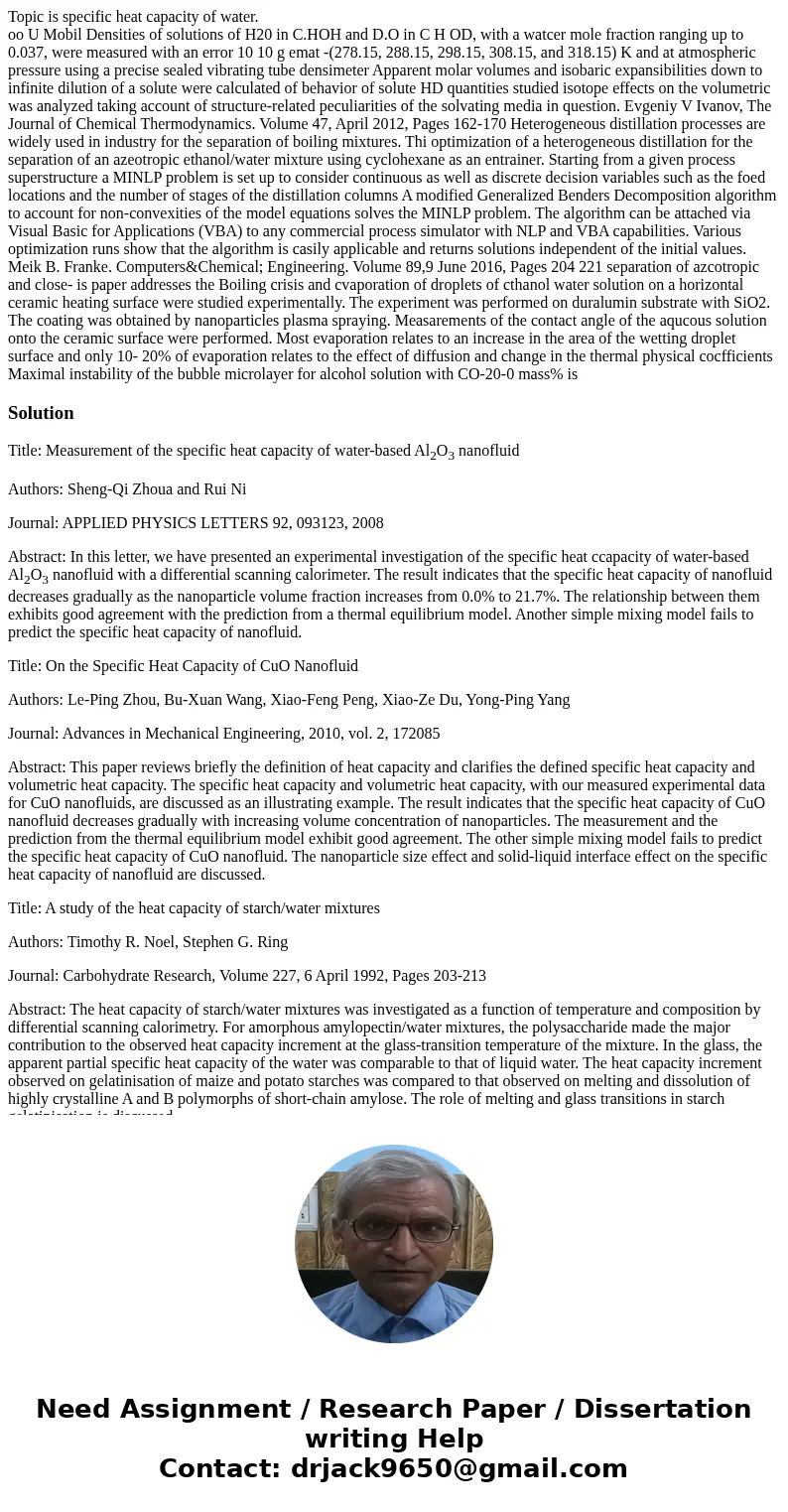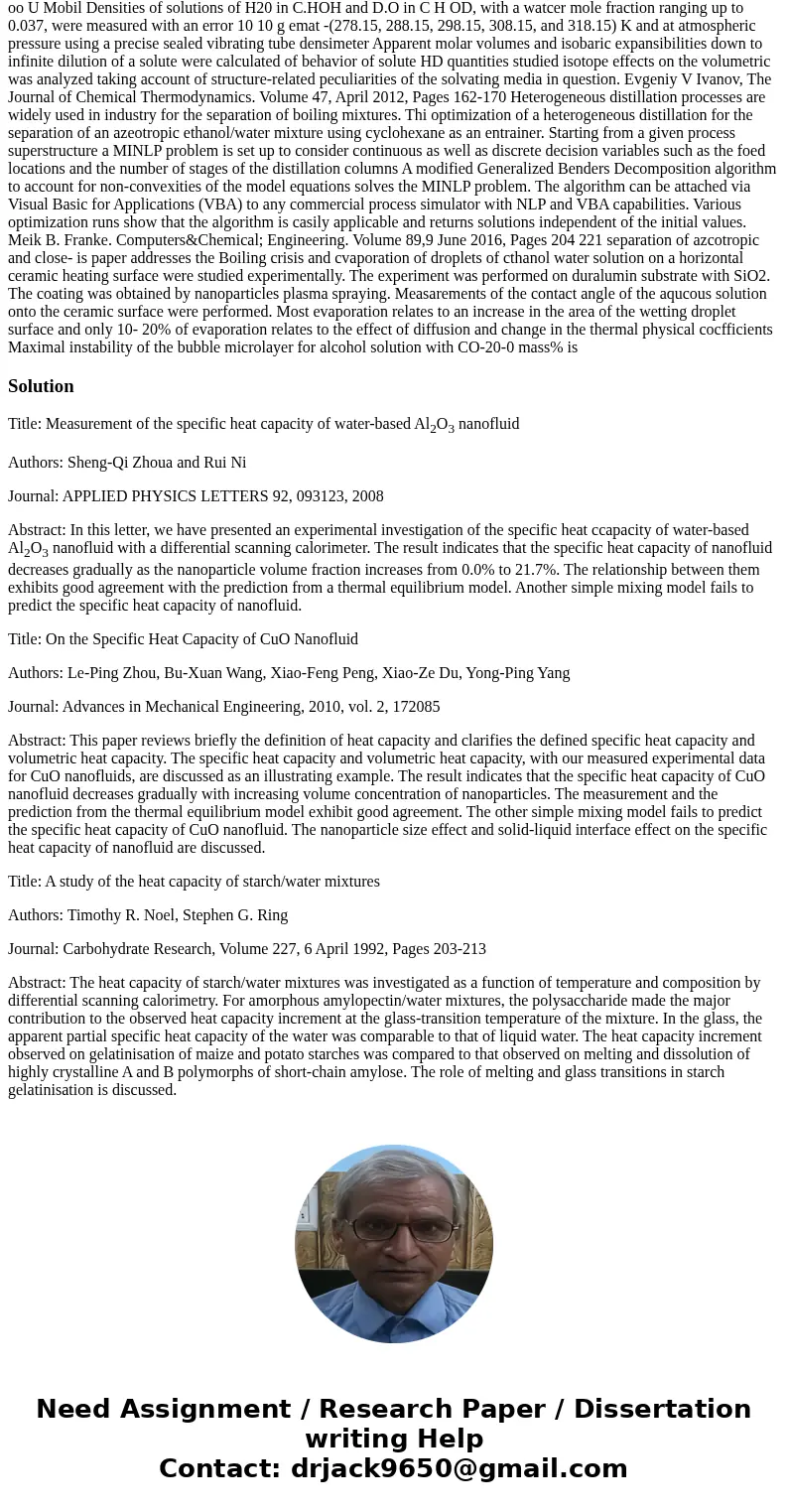Topic is specific heat capacity of water oo U Mobil Densitie
Solution
Title: Measurement of the specific heat capacity of water-based Al2O3 nanofluid
Authors: Sheng-Qi Zhoua and Rui Ni
Journal: APPLIED PHYSICS LETTERS 92, 093123, 2008
Abstract: In this letter, we have presented an experimental investigation of the specific heat ccapacity of water-based Al2O3 nanofluid with a differential scanning calorimeter. The result indicates that the specific heat capacity of nanofluid decreases gradually as the nanoparticle volume fraction increases from 0.0% to 21.7%. The relationship between them exhibits good agreement with the prediction from a thermal equilibrium model. Another simple mixing model fails to predict the specific heat capacity of nanofluid.
Title: On the Specific Heat Capacity of CuO Nanofluid
Authors: Le-Ping Zhou, Bu-Xuan Wang, Xiao-Feng Peng, Xiao-Ze Du, Yong-Ping Yang
Journal: Advances in Mechanical Engineering, 2010, vol. 2, 172085
Abstract: This paper reviews briefly the definition of heat capacity and clarifies the defined specific heat capacity and volumetric heat capacity. The specific heat capacity and volumetric heat capacity, with our measured experimental data for CuO nanofluids, are discussed as an illustrating example. The result indicates that the specific heat capacity of CuO nanofluid decreases gradually with increasing volume concentration of nanoparticles. The measurement and the prediction from the thermal equilibrium model exhibit good agreement. The other simple mixing model fails to predict the specific heat capacity of CuO nanofluid. The nanoparticle size effect and solid-liquid interface effect on the specific heat capacity of nanofluid are discussed.
Title: A study of the heat capacity of starch/water mixtures
Authors: Timothy R. Noel, Stephen G. Ring
Journal: Carbohydrate Research, Volume 227, 6 April 1992, Pages 203-213
Abstract: The heat capacity of starch/water mixtures was investigated as a function of temperature and composition by differential scanning calorimetry. For amorphous amylopectin/water mixtures, the polysaccharide made the major contribution to the observed heat capacity increment at the glass-transition temperature of the mixture. In the glass, the apparent partial specific heat capacity of the water was comparable to that of liquid water. The heat capacity increment observed on gelatinisation of maize and potato starches was compared to that observed on melting and dissolution of highly crystalline A and B polymorphs of short-chain amylose. The role of melting and glass transitions in starch gelatinisation is discussed.


 Homework Sourse
Homework Sourse